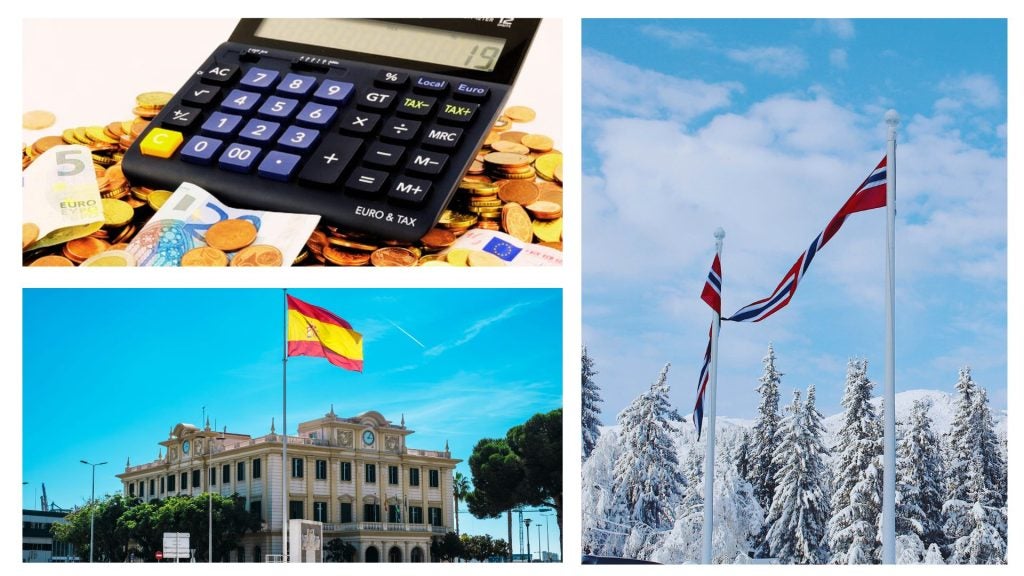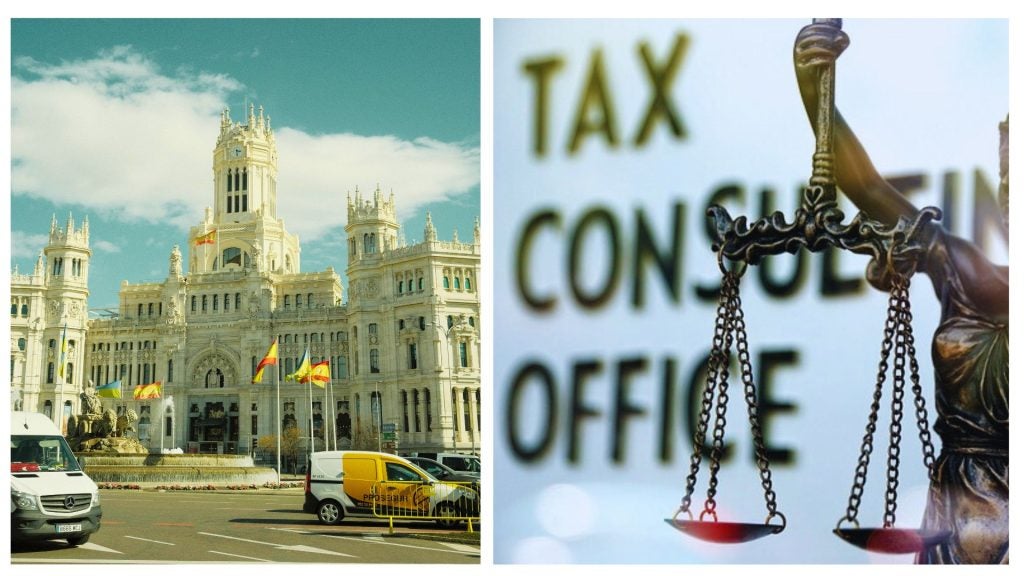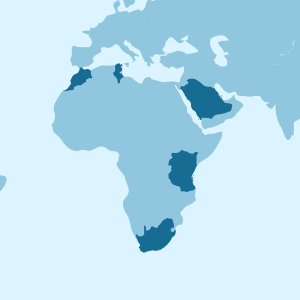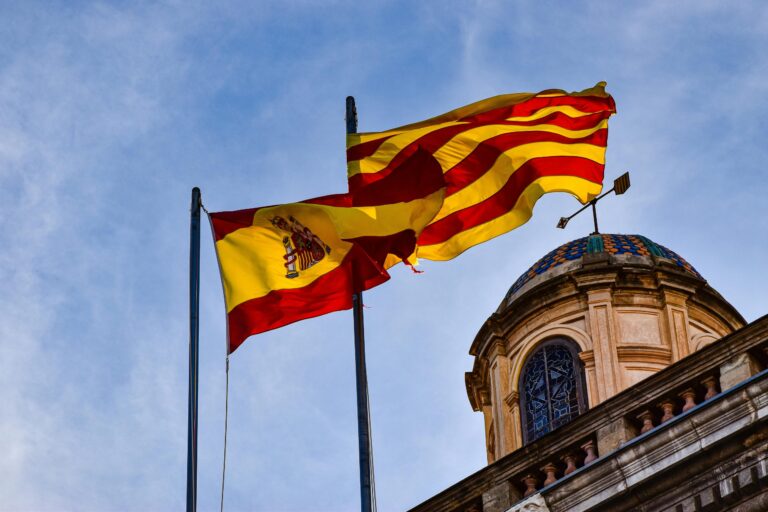Taxes in Norway vs Spain: Which should I pay?
Find out the taxes in Norway vs. Spain and discover where it's better to pay taxes if your plan is to live in either of these countries.
Are you planning to live in Norway or Spain? Stop for a moment to learn about the taxes you’ll be responsible for once you establish your tax residency. At Holafly, we compare Norway vs. Spain taxes to help you get a clear view of the different tax regimes, system features, types of taxes, fixed and variable rates, and where it’s better to pay taxes.

How does the tax system work in Norway vs. Spain?
Norway has a high cost of living, as well as high tax rates. However, it stands out as a great place to live and work due to its excellent quality of life and the efficient operation of local services and systems, along with a fully stable economy with the largest sovereign wealth fund in the world.
Spain, on the other hand, is one of the most visited countries in the world, with tourism being the main driver of its economic solvency. Despite this, its tax system and bureaucratic procedures make it slightly more complicated to pay taxes and live there.
The tax system in Norway vs. Spain presents significant differences in terms of ease of procedures and tax declarations, influenced by digitalisation, bureaucracy, and the clarity of regulations. Let’s break down both systems:

Norway: A highly digitalised and simplified system
The Norwegian tax system is fully digitalised. Most tax declarations are completed via the online platform of the Norwegian Tax Administration (Skatteetaten).
Data such as company or individual income, withheld taxes, bank interest, etc., are automatically filled in tax returns, reducing errors and saving time.
Tax guides and taxpayer support are available in multiple languages, so if you’re a foreigner paying taxes in the country, the process and tax laws are quite clear.
Spain: More bureaucracy and complexity
The Spanish tax system is more bureaucratic due to fiscal decentralisation.
Autonomous communities set different rates and deductions for the Income Tax (IRPF) and other taxes, meaning local regulations vary, and taxpayers must follow both regional and national rules, which can cause confusion and complications in the process.
Spain also has digital platforms such as the Tax Agency (AEAT), but the system isn’t fully automated, and review processes can take longer.
| Aspect | Norway | Spain |
| Digital Platform | Fully automated and easy to use. | Functional, but with less automation. |
| Taxpayer Support | Accessible and clear, available in various languages. | Relies on advisors for greater clarity. |
| Decentralisation | Centralised, with clear rules. | Decentralised and variable. |
| Compliance Time | Low, thanks to digitalisation. | Higher, due to system complexity. |
Tax system features in Norway vs. Spain
Business or Corporate Taxes: Norway vs. Spain
1. Corporate income tax
Norway:
- Flat rate of 22% on net business profits.
- Companies involved in natural resource extraction (such as oil and gas) pay additional taxes, with effective rates higher than 78% due to the strategic importance of these activities in the country.
- Norway encourages investment in technology and innovation, offering tax incentives for businesses in sustainable sectors.
Spain:
- General rate of 25%, with a reduced rate of 15% for new businesses in the first two years of activity.
- There are tax deductions for R&D activities (Research, Development, and Innovation) and for investments in renewable energy and digital transformation.
- In specific regions, such as Cádiz or Barcelona, businesses can operate with VAT and customs duty exemptions.
2. VAT (Value Added Tax)
Norway:
- Standard rate of 25% applied to most goods and services.
- Reduced rate of 15% for food and 12% for transport, cultural services, and tourism.
- Exports are exempt from VAT.
Spain:
- Standard rate of 21%, with reduced rates of 10% for products like food and tourism, and 4% for basic necessities like medicines.
- Exporting businesses can take advantage of VAT exemptions to boost international trade.
3. Social security contributions
Norway:
- Employers contribute 14.1% of gross salaries.
- These contributions cover benefits like generous parental leave, public pensions, and a universal healthcare system.
Spain:
- Employers contribute 23.6% of gross salaries, depending on the sector and type of contract.
- These contributions go towards benefits like social security, unemployment, and sick leave.
4. Local and Specific Taxes
Norway:
- Municipalities can impose local taxes on properties and land, with rates varying by location and property value.
- No wealth tax for businesses.
Spain:
- Economic Activities Tax (IAE): Applies to businesses with annual turnover exceeding €1,000,000 ($1,090,000).
- Wealth Tax: Some regions may apply it to specific business activities.
5. Dividend and Capital Gains Taxes
Norway:
- Dividends are subject to a withholding tax of 25%, though foreign investors can benefit from international treaties to avoid double taxation.
Spain:
- Rates on dividends and capital gains range from 19% to 27%, depending on the total amount.
- Spain has bilateral tax treaties to avoid double taxation.
The payment of taxes in Norway stands out for having a more simplified system with flat rates and few additional taxes, but with high contributions in strategic sectors like oil.
On the other hand, Spain offers more tax incentives for startups and small businesses, although it has a higher social burden for employers. The choice between the two countries depends on the sector and the specific needs of the company.
Where is it Better to Pay Taxes as a Legal Entity?
Norway typically offers a more competitive system for traditional businesses, while Spain is more favourable for startups and small businesses due to its initial tax incentives.
Reasons to choose Norway
- Simple tax system: Norway has flat rates and clear tax procedures.
- Incentives for sustainability and technology: Businesses involved in renewable energy and technology can access competitive tax benefits.
- Economic stability: Norway offers a predictable tax environment, ideal for companies seeking to operate in the long term.
Reasons to choose Spain
- Incentives for startups: New businesses pay a reduced rate of 15% during the first two years with profits, reducing initial costs.
- Free trade zones and special regimes: Operating in areas like the Canary Islands can involve very low tax rates, attractive to logistics, trade, and technology companies.
- International connections: Spain has a strategic location for businesses expanding into Europe, Africa, and Latin America, with which it has double taxation treaties.

Norway vs. Spain Tax Comparison for Individuals
Individuals in Norway enjoy the advantage of a simplified tax system with moderate rates and extensive social benefits. In Spain, the tax burden may be higher but with various deductions in specific cases, offering more benefits for large families or self-employed workers.
1. Personal Income Tax (IRPF)
Norway:
- The system is progressive, with a base rate of 22% applied nationwide. Additional taxes are added for those with higher incomes:
- 13.4% for income between $18,500–65,300 (€17,000–60,000).
- 16.5% for income over 708,000 Norwegian crowns.
- Municipalities also apply a local tax that varies between 2% and 8%, depending on location.
Spain:
- The IRPF is progressive, with rates ranging from 19% for the first $13,600 (€12,450) to 47% for incomes over $327,000 (€300,000).
- Autonomous communities have the power to adjust the rates, widening the cost differences between regions such as Madrid and Catalonia.
- Deductions are available for buying a primary residence, large families, and work-related expenses.
2. Value Added Tax (VAT)
Norway:
- Standard rate of 25%, and a reduced rate of 15% for basic products like food.
- Tourism and cultural services are taxed at 12%.
Spain:
- Standard rate of 21%, with reduced rates of 10% for tourist services and processed foods, and 4% for essential goods like bread and medicines.
3. Tax on heritage
Norway:
- Applies to individuals with wealth exceeding $158,000 (€145,000).
- Rates are progressive, starting at 0.85% of net wealth.
Spain:
- This tax applies only in certain autonomous communities. The general exemption covers up to $760,000 (€700,000), and the rate varies between 0.2%–3.5%, depending on the region and wealth level.
4. Capital Gains and Income Tax
Norway:
- Capital gains, such as from selling properties or investments, are taxed at 22%, with exemptions for the primary residence if lived in for over two years.
Spain:
- This tax varies between 19% and 26%, depending on the amount of the gain. Higher rates apply to gains exceeding $218,000 (€200,000).
5. Social security contributions
Norway:
- Employees pay 8% of their gross income as a contribution to social insurance. This covers benefits like healthcare, pensions, and parental leave.
Spain:
- The standard rate for employees is 6.35%, though this can vary depending on the type of contract and sector.
6. Specific Taxes
Norway:
- Inheritance tax: This was abolished in 2014, but there are still indirect taxes for the transfer of assets to heirs.
- Environmental taxes: Norway imposes a tax on carbon emissions and promotes sustainable practices through incentives.
Spain:
- Inheritance and Donations Tax: Varies depending on the autonomous community, with exemptions in Madrid and high rates in regions such as Andalusia.
- Documented Legal Acts Tax: Applies to property purchases and other legal contracts.
Important: If you are a frequent traveler and want to stay connected without worrying about expensive roaming or looking for a new SIM at every destination, Holafly’s subscription plans are for you. With a single eSIM, enjoy internet in more than 160 countries for a fixed price and no surprises on your bill. Travel without limits and connect easily and securely! 🚀🌍

Where is it better to pay taxes as an individual?
In general terms, the answer depends on personal priorities and specific income situations. Norway has a lower tax burden, while Spain’s taxes impose higher rates at higher income brackets, with exemptions in certain regions.
Reasons to choose Norway
- Predictable tax burden: Rates are national and local taxes are standardised.
- Strong social benefits: Services like healthcare and education are of high quality, reducing the need for private spending in these areas.
- Simplicity of the system: Tax processes are clear and easy to navigate, with fewer deductions and exceptions that complicate calculations.
Reasons to choose Spain
- Personalised deductions: For housing, family, or business investment.
- Lower rates for lower incomes: The first 19% bracket in Spain is lower than the minimum rate in Norway. This benefits those with lower earnings.
- Climate and quality of life: For foreign residents or retirees, Spain may be preferable due to its lower cost of living and climate.

Tax Comparison: Norway vs. Spain
Norway vs. Spain have very different systems when it comes to tax obligations.
Businesses or legal entities are subject to high but fixed tax rates in the Nordic country, guaranteeing quality of life and social security, while Spain has lower rates for taxes like VAT, but most taxes vary according to economic activity, generated income, and the region in which you live or operate your business.
Take a close look at our comparison of various taxes in both countries to draw your conclusions and choose the most suitable tax system for you:
Taxes in Norway vs. Spain for Businesses
| Tax | Norway | Spain |
| Corporate income tax | 22% (flat rate), for natural resource companies, the rate may be higher depending on specific legislation. | 25% (15% for new businesses during the first 2 years) |
| VAT (Value Added Tax) | 25% (15% for food, 12% for tourism, transport) | 21% (reduced rates for specific products) |
| Social security contributions | 14.1% of gross salaries | 28.3% – 31.9% depending on the sector |
| Economic Activities Tax (IAE) | 0% | Applies to businesses with turnover over $1,090,000 (€1,000,000). |
| Dividend and Capital Gains Tax | 25% withholding on dividends | 19% – 27% depending on amount |
Taxes in Norway vs. Spain for Individuals
Taxes in Norway vs. Spain for Individuals
| Tax | Norway | Spain |
| Personal Income Tax (IRPF) | Progressive: 22% + 13.4% – 16.5% depending on income | Progressive: 19% – 47% depending on income |
| Tax on heritage | 0.85%–1.1% for wealth above $158,000 (€145,000). | 0.2% – 3.5% depending on autonomous community |
| Capital Gains Tax | 22% on capital gains (exemptions for primary residence) | 19% – 26% depending on the gain amount |
| Social security contributions | 8% of gross income | 6.35% (variable depending on contract and sector) |
| VAT (Value Added Tax) | 25% (15% for food, 12% for transport, tourism) | 21% (10% and 4% for specific products) |
Taxes in Norway vs. Spain for Individuals














































 Pay
Pay  Language
Language  Currency
Currency 


















 No results found
No results found









